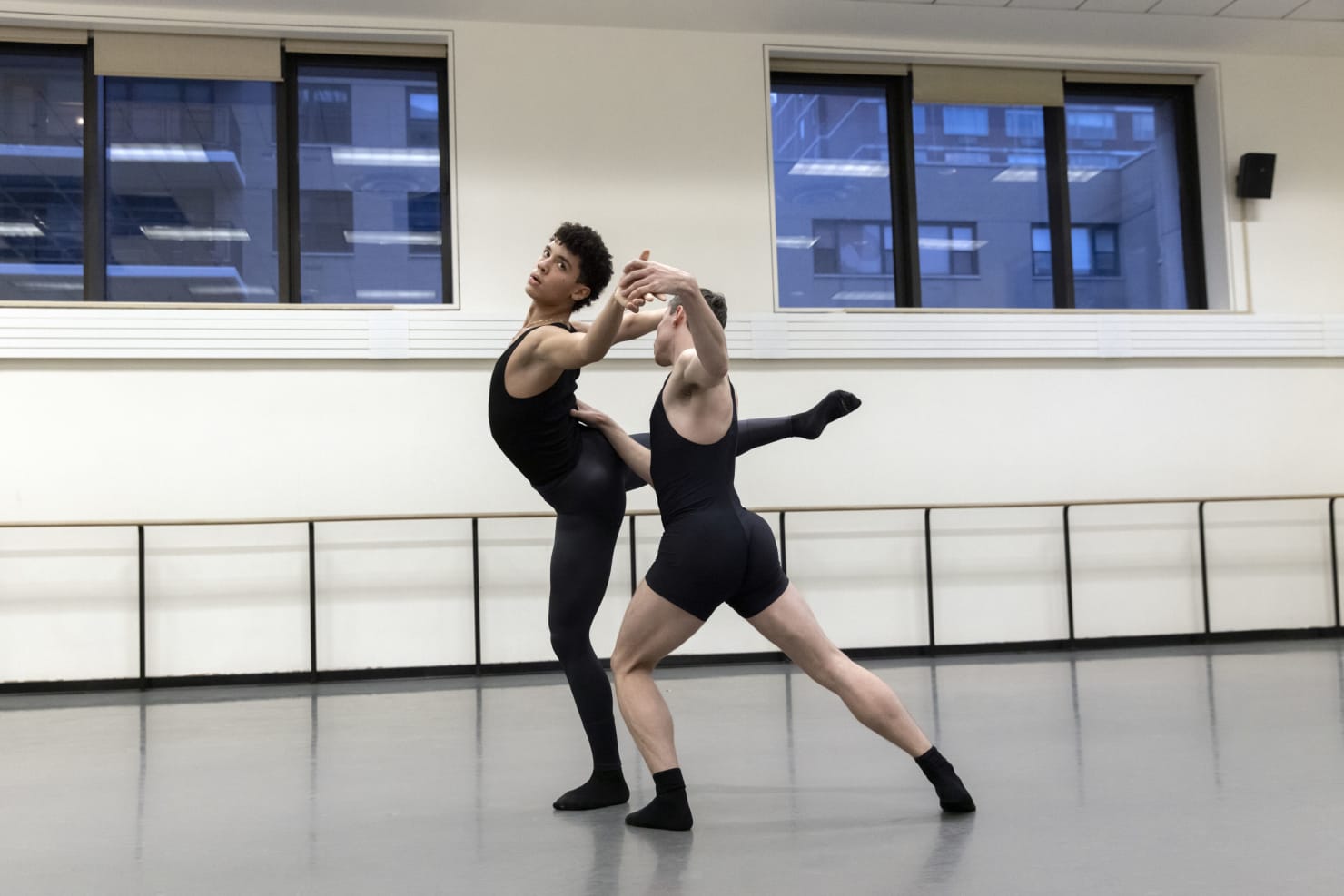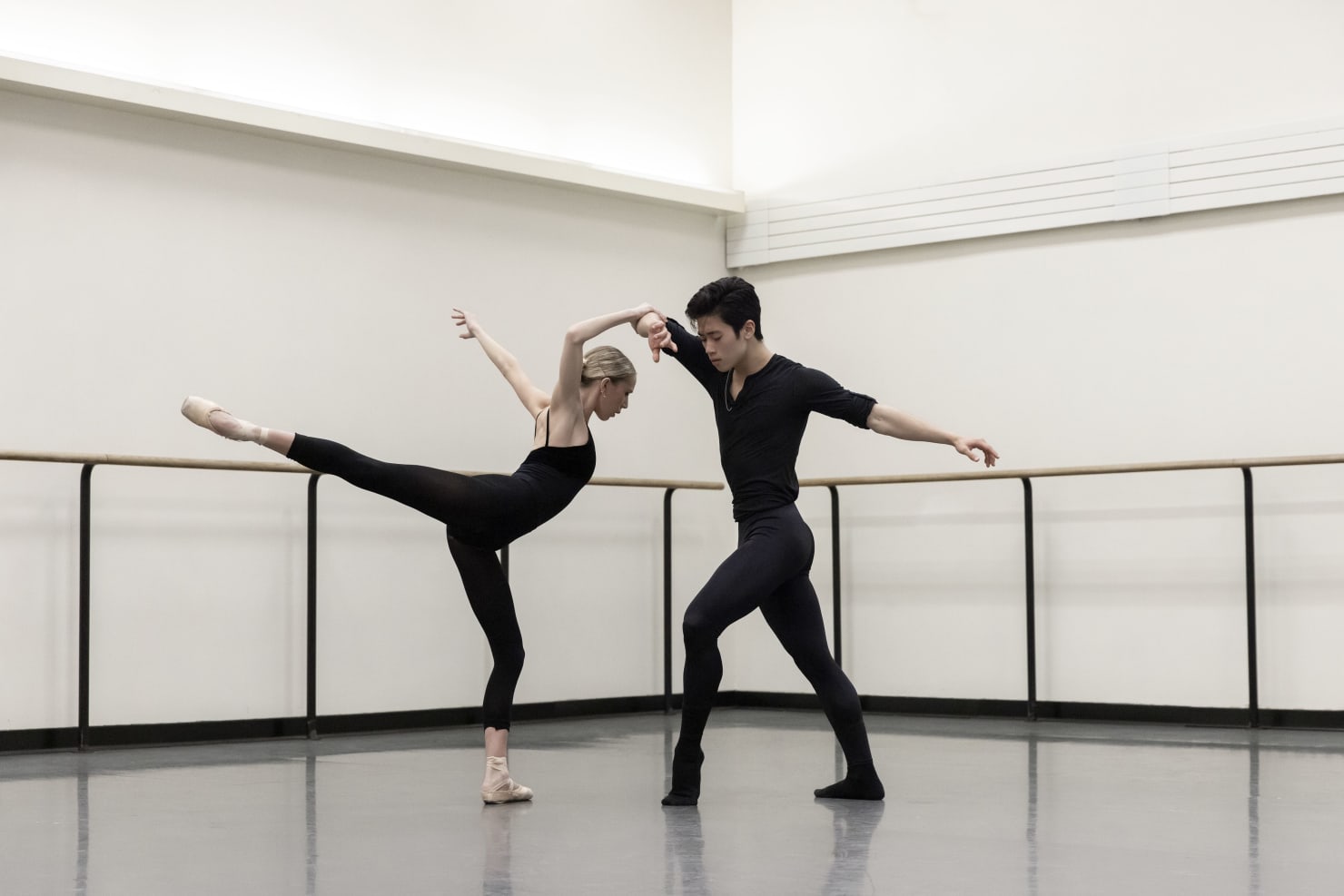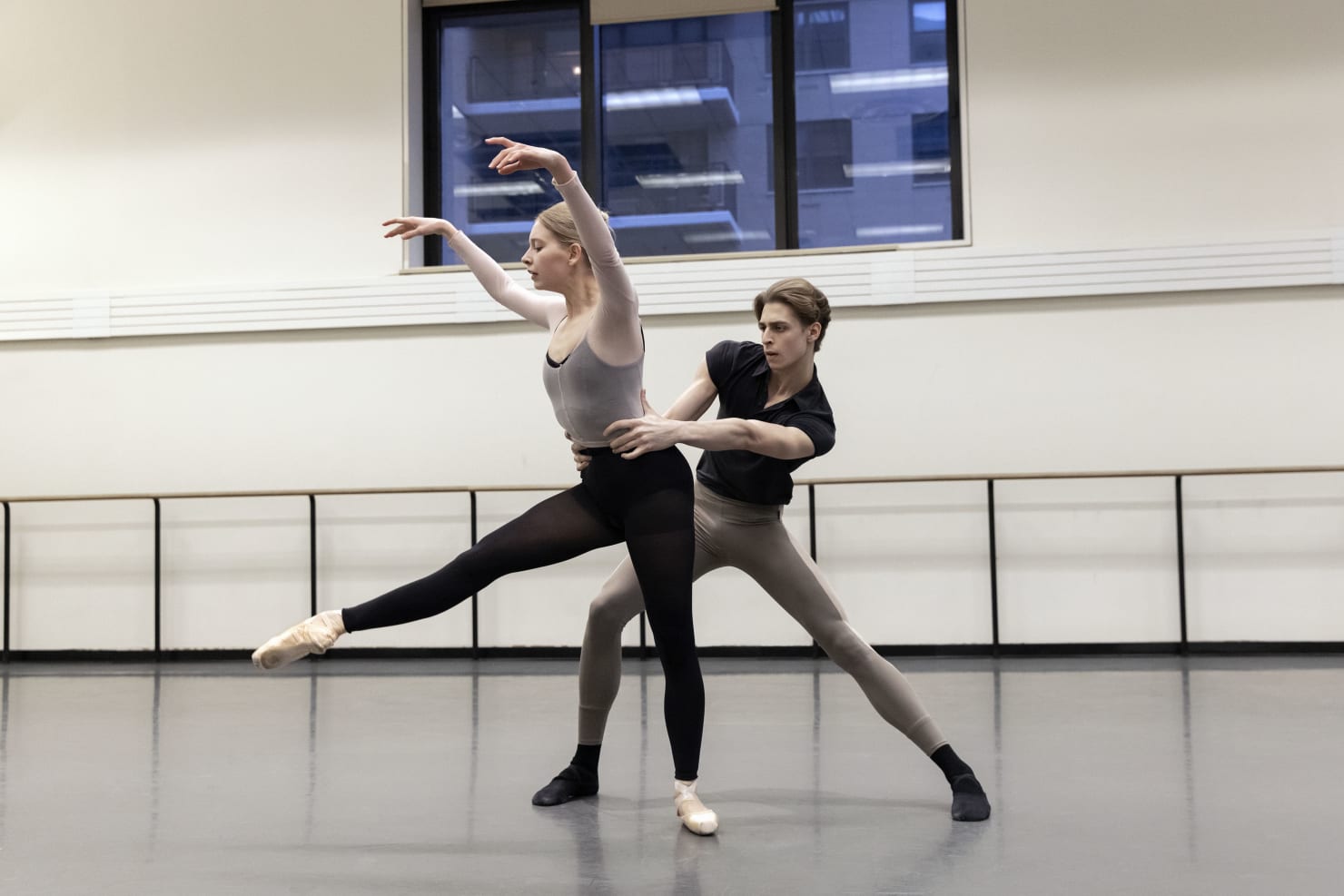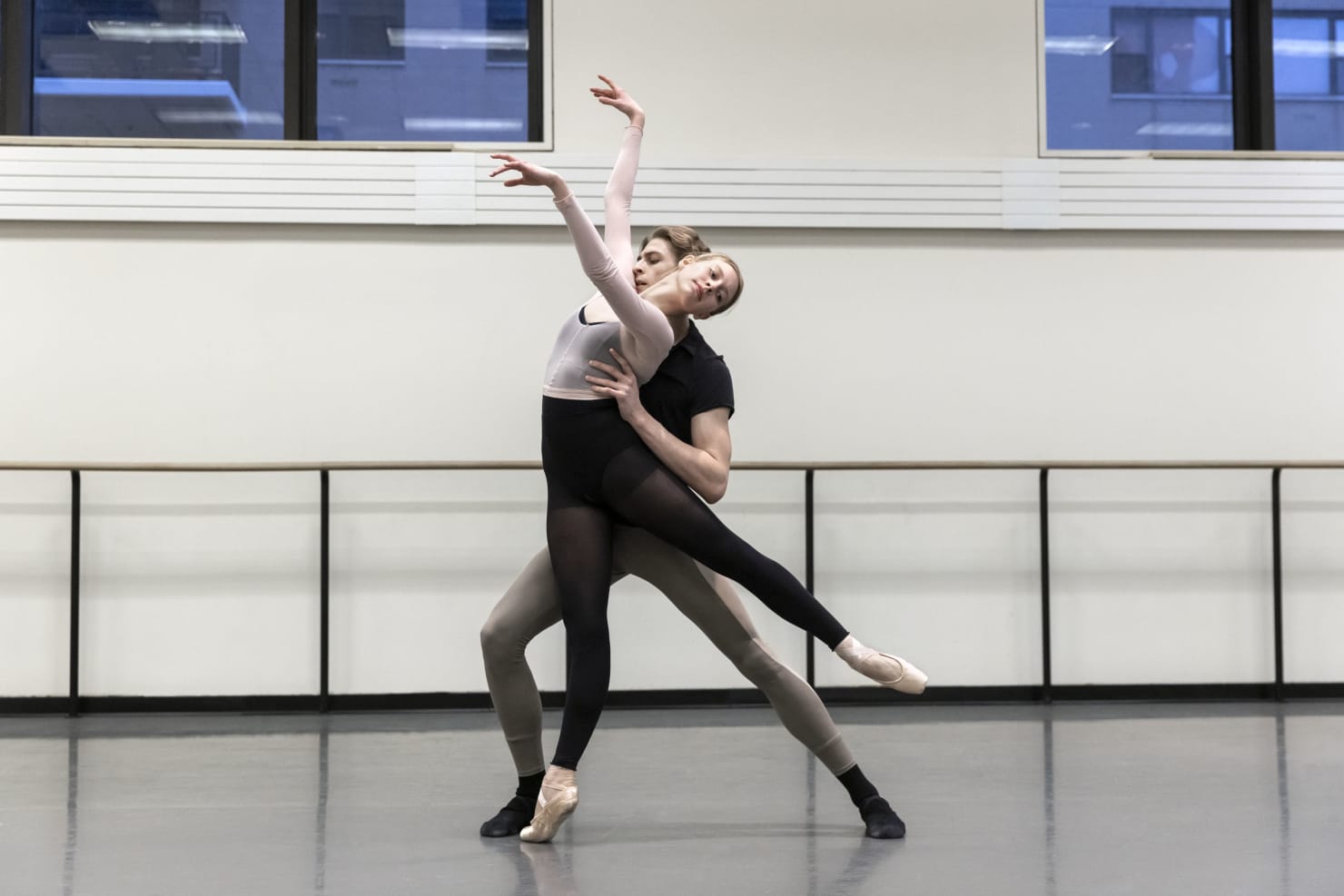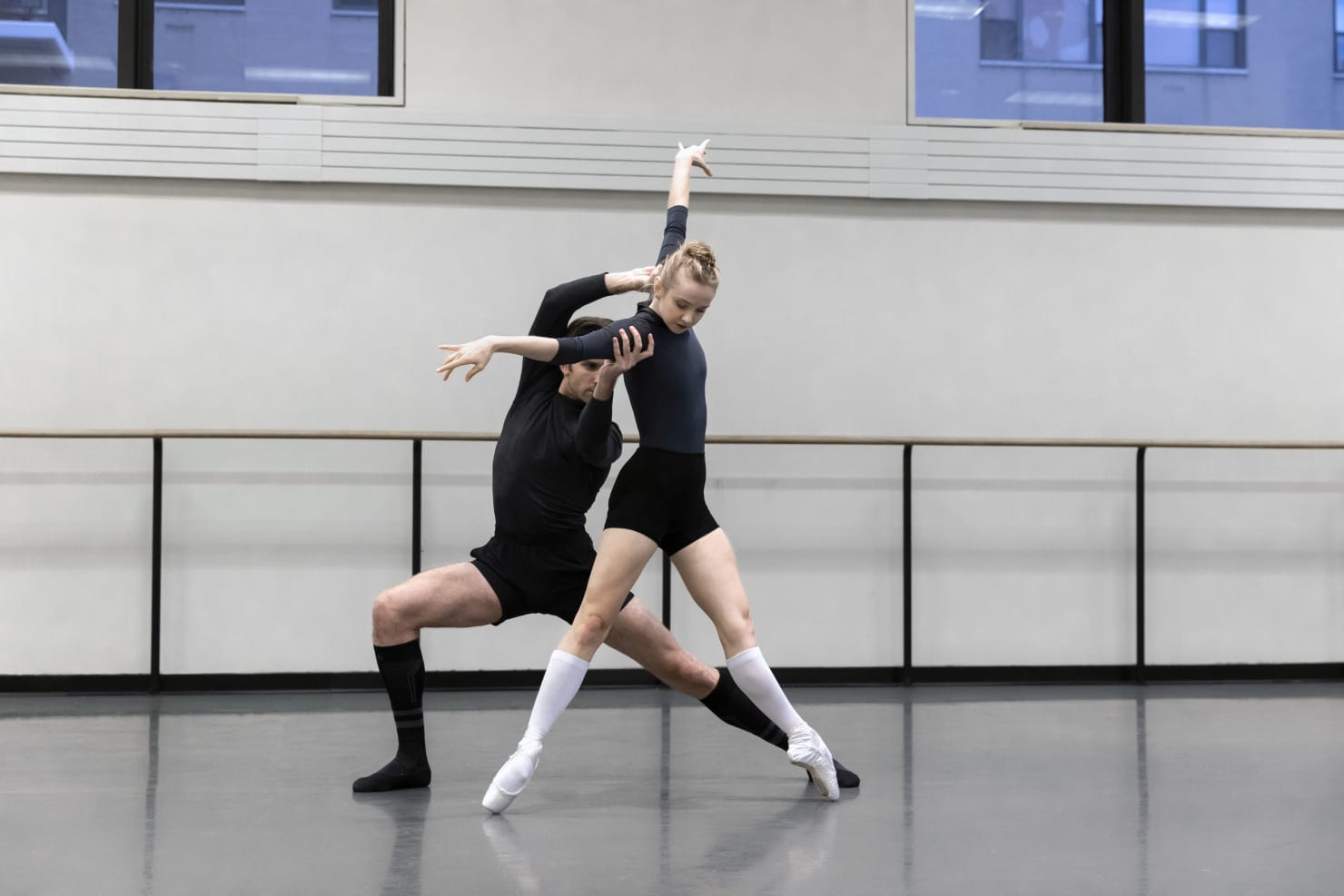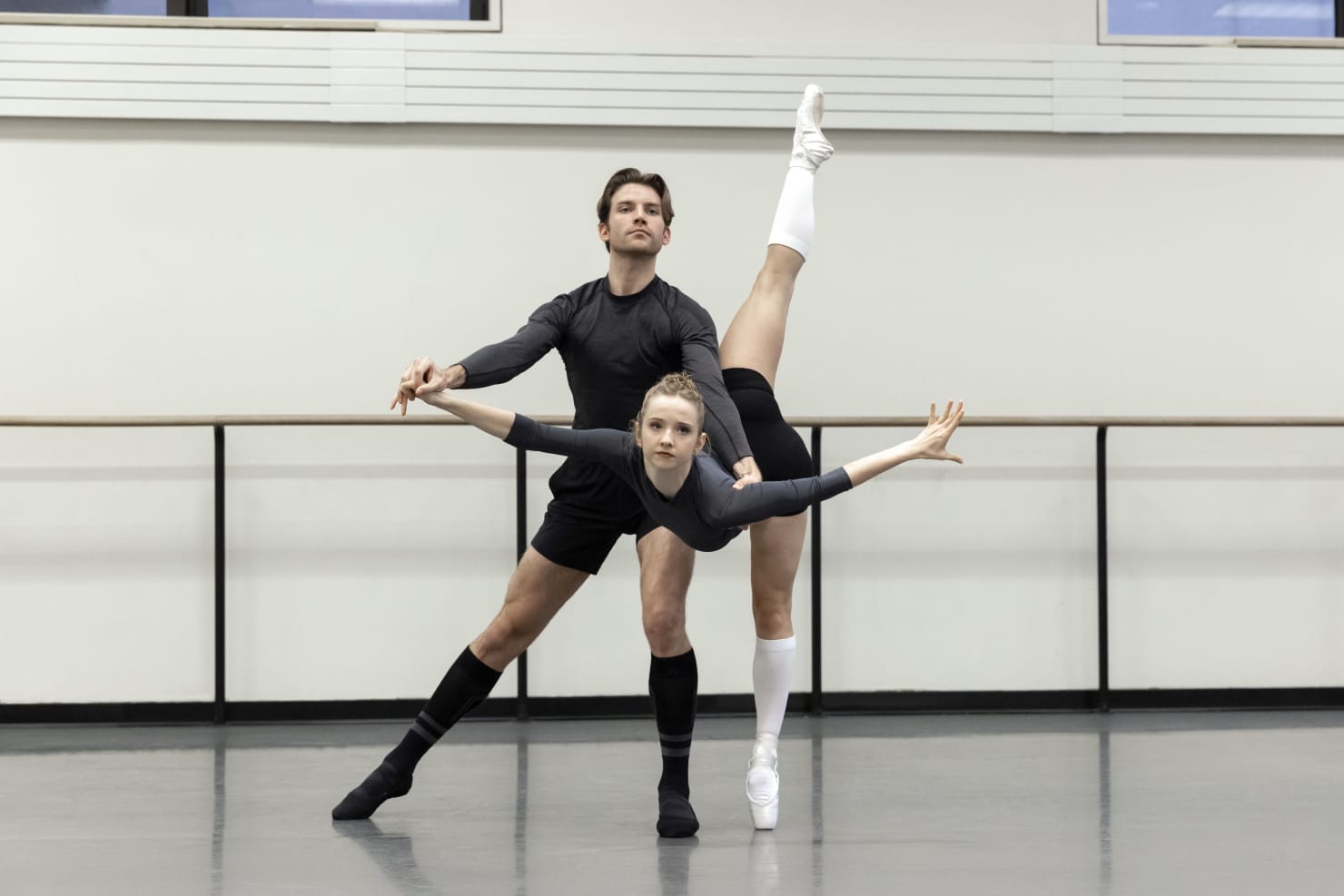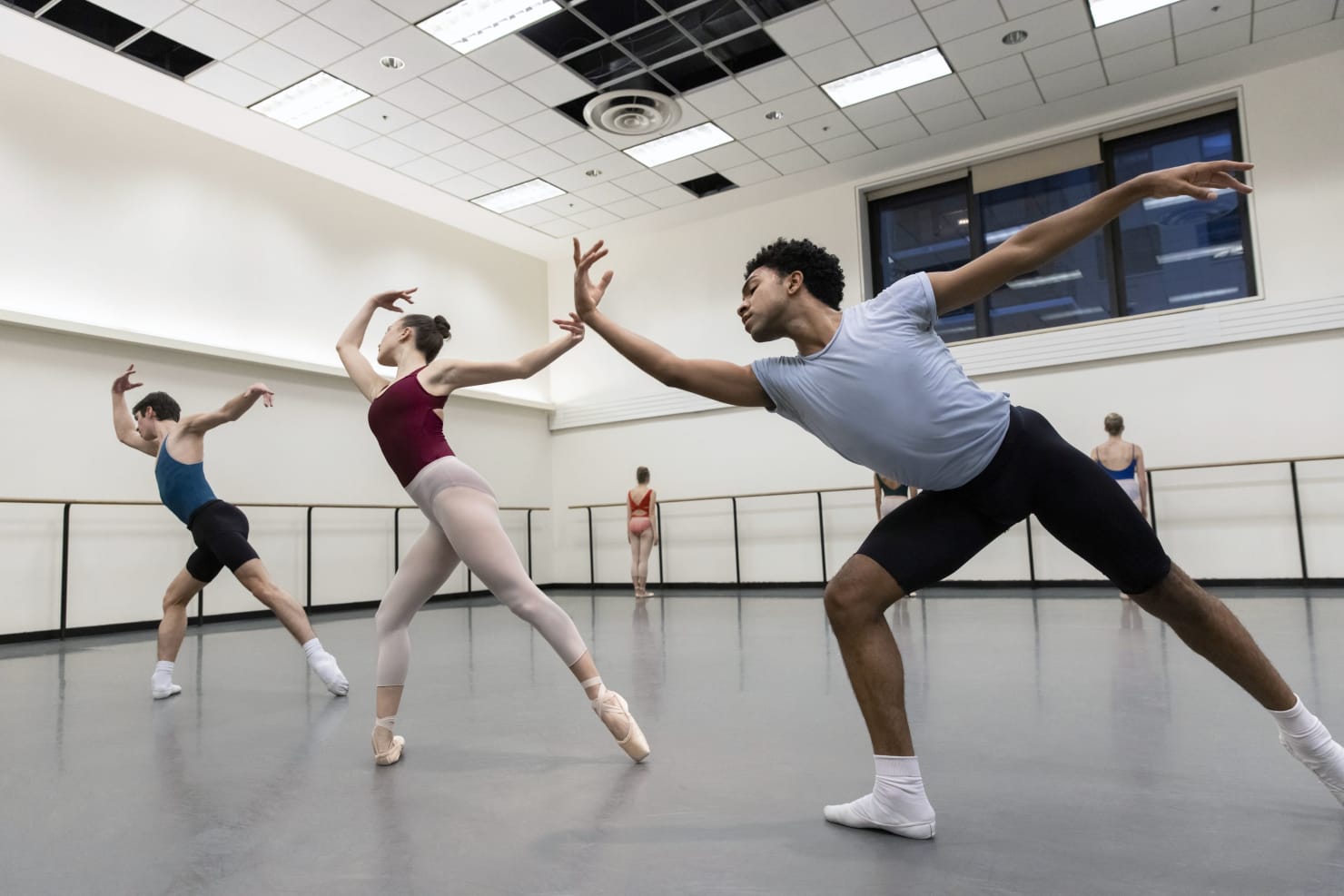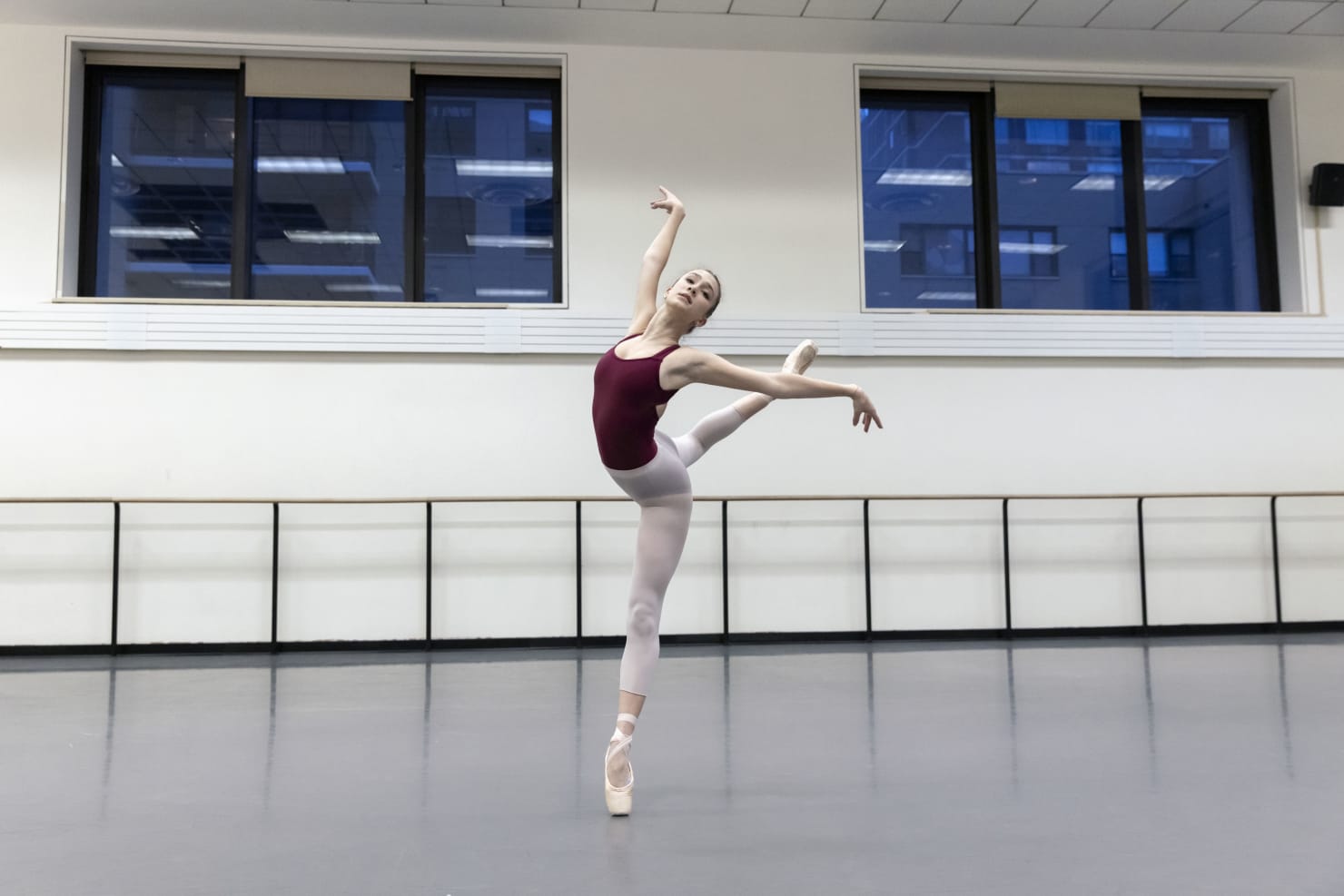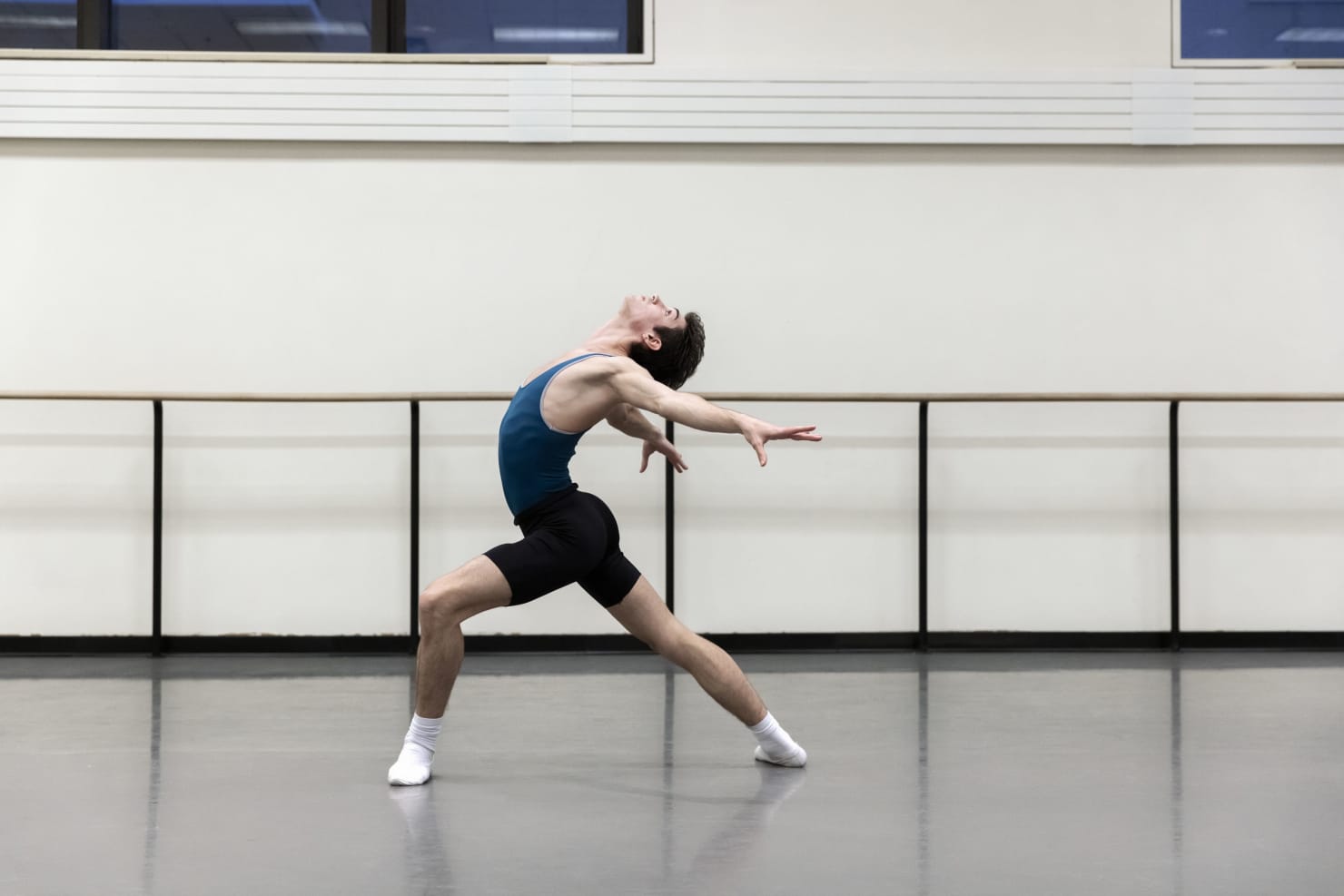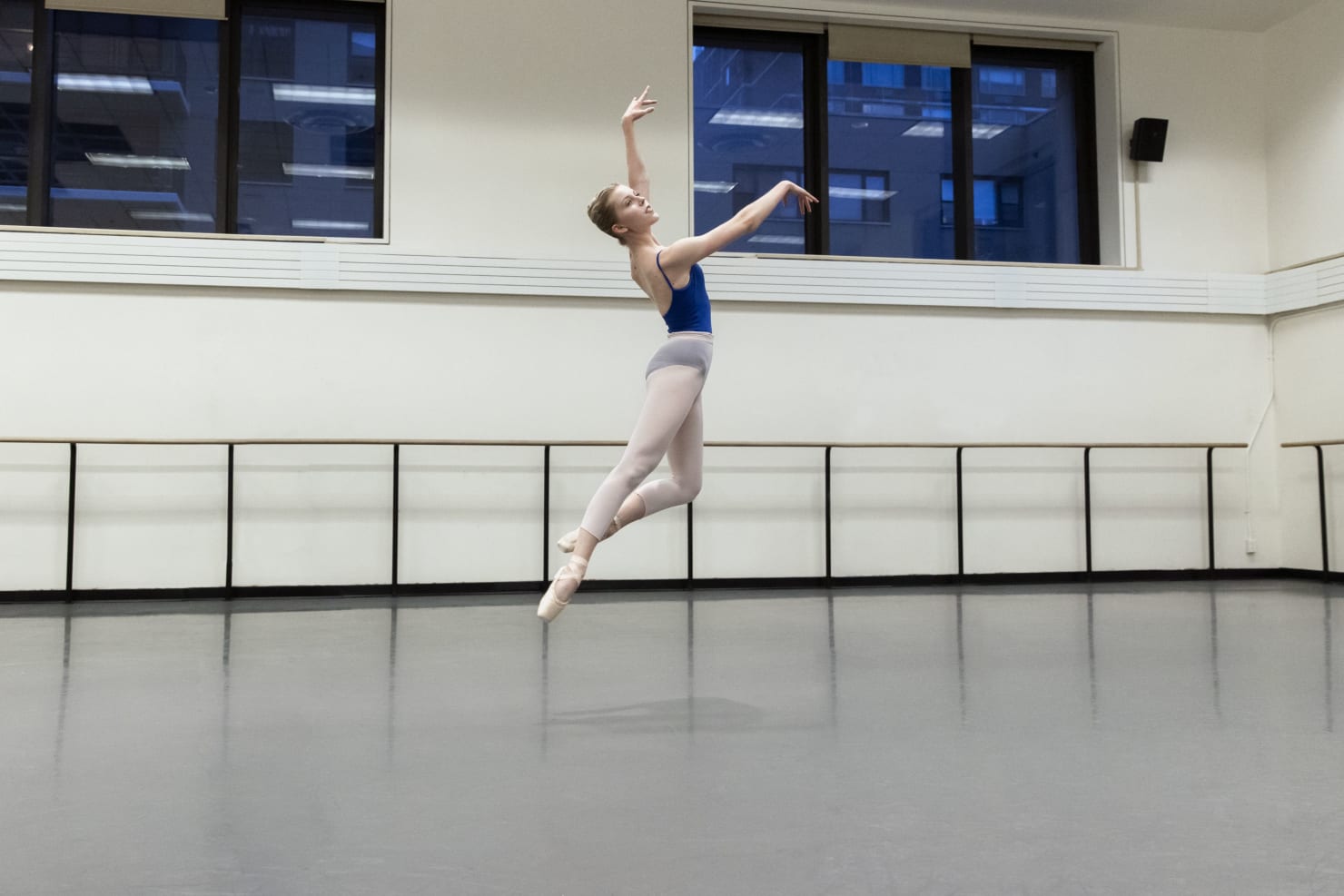
The NYCI Fall Session 2021
Behind the Scenes of the Latest Institute Commissions
, February 7, 2022
The New York Choreographic Institute has been committed to fostering the work of emerging international choreographers for more than 20 years—a commitment maintained despite the recent obstacles presented by the COVID-19 pandemic. The challenges that social-distancing requirements presented also inspired innovations and an opportunity to expand the audience for the bold works created under its auspices, through the making of dance films shareable with the world. Artistic Director Adrian Danchig-Waring was able to preserve the Institute’s supportive environment, in which experimentation, vulnerability, and play were encouraged of the artists involved, while opening the Institute’s doors and widening the purview of its outreach. This was true of the Session completed in October 2021.
"Last fall we returned, full force, to our studio sessions in Lincoln Center, inviting a dynamic group of emerging choreographers to collaborate with dancers from New York City Ballet and students from the School of American Ballet,” says Danchig-Waring. Alongside public showings of the three commissioned works by choreographers Keerati Jinakunwiphat, Houston Thomas, and Durante Verzola, filmmaker Quinn Wharton produced three films that communicate the urgency and artistry that emerged from this most recent Institute session. “Capturing the dramatic, soul-searching, and ultimately joyful spirit of that moment, these dance films celebrate an inflection point at the Choreographic Institute, where film makes our work increasingly accessible and inclusive."
We spoke with some of the artists involved to learn more about the inspirations, processes, challenges, and triumphs of the Fall Session.
Filmmaker Quinn Wharton brought with him a background in dance and some familiarity with the Company when he came on board to capture the three Fall Session films. “I started dancing when I was six, quite early,” he says. After attending high school at the North Carolina School of the Arts, he joined San Francisco Ballet, where he danced for eight years. “During my time there, I picked up a camera due to an injury early on, and just sort of kept doing it.”
While dancing with Hubbard Street Dance Chicago, Wharton continued working as a photographer, pursuing video work as well; in 2014, he went freelance, eventually moving to New York City. In the summer of 2020, while working as a videographer at the Kaatsbaan Cultural Park Summer Festival, Wharton encountered a familiar face. “I became friends with [NYCB Soloists and filmmakers] Peter Walker and Emily Kikta during the pandemic,” he says. “Emily was the first person that I photographed at City Ballet, for Dance Magazine, so we had sort of known each other. We met [at Kaatsbaan] and commiserated over the rate of work coming at us and what needed to be created, because they were making films at the time as well. And now that they're back at work [at NYCB], Adrian [Danchig-Waring] was asking them about filming this series again and they said, ‘Well, we can't do it, but we know this guy, Quinn, who can.’”
The brief was fairly straightforward, but not without its challenges, as Wharton explains: “We were trying to create the best possible representation of each work, giving each work individual flavor, within the context that this is a rehearsal space, and these are pieces being created in that environment. The expectation of the Choreographic Institute has always been, it's a work in process. That's the point. It’s a place to craft. So the films needed to reflect that. My goal then becomes, all right, we have a pretty specific framework. How do we make each of these as unique as possible?”
He then met with each of the choreographers to get a sense of their expectations. “Some choreographers are very particular about seeing the edge of every piece of their work, whereas Keerati [Jinakunwiphat] was not—she was like, ‘I’d like it to be funky. I'd like it to be weird.’ It's a really interesting piece,” he says. “With Houston [Thomas], it's a bit moodier and it's a bit darker, so I knew that we wanted something that felt relatively ethereal. I think [Durante Verzola’s work is] a very playful piece and there's a lot of constructed work in it. There are lines, there are shapes, there are very clear delineations that happen.
“So, that was the process,” he continues, “and making sure that the dancers did the best version of it and we had places to cut and we had backups in case things didn't fit right. Being a dancer myself, I usually just go chunk by chunk in the space rather than trying to storyboard the whole thing out—generally that's not terribly useful for me.” At the time that we spoke, Wharton was in the process of editing the three films, in collaboration with the choreographers.
“I know that these choreographers are pouring their hearts into this work, and I know how personal it is, and I just hope that I do it justice.”
Impeccable Quake
“A main inspiration for this work is the idea of a phoenix rising from the ashes. I was interested in ideas surrounding shedding, rebirth, newness, and freedom,” says Keerati Jinakunwiphat. Originally from Chicago, Illinois, Jinakunwiphat has been a dancer with A.I.M by Kyle Abraham since 2016. While this was her first session with the Choreographic Institute, it was not her first interaction with the Company—she has assisted Abraham with a commissioned work for NYCB. “I knew it was a great opportunity that would provide time and space to create on dancers from NYCB and SAB,” she says of the Institute’s invitation to participate last fall. “I haven't had too much experience creating on professional ballet companies, so when Adrian reached out, I was eager to be a part of it.”
Impeccable Quake, Jinakunwiphat's work, features its cast of eight dancers performing as partners before peeling away to solo as their colleagues look on, then reconnecting, occasionally seeming to move at cross purposes. The work’s mood is quickly established by its score, a piece for chamber orchestra by contemporary composer Du Yun. “The title of the track, ‘Impeccable Quake,’ is what drew me in,” says Jinakunwiphat. “I identified with those words in a way, and when I listened to it initially, I was moved by how odd and powerful the track was.” The resulting film similarly corresponds to the music’s complexity, captured in stark black and white by a camera constantly on the move.
“I loved working with the NYCB dancers! They were so open and eager for this new experience and I greatly appreciated it,” adds Jinakunwiphat. “I felt welcomed to challenge and share with them. It was a treat to watch the movement settle in their bodies and witness their growth over the two weeks.”
Quinn Starner, who recently became an apprentice with the Company, echoes Jinakunwiphat's sentiments regarding the collaborative process. “She created such a safe environment for us to let loose and explore new ways of moving. It was such an amazing experience.
“Impeccable Quake was such an enlightening piece to dance,” Starner continues. “It was about learning how to shed your inhibitions and fears, while attempting to open up and express yourself and let go of what held you back. I loved dancing this piece and learned so much about myself through the process. The freedom of this piece allowed me to find new ways to express myself through my movement.”
Kennedy Targosz, another new apprentice with NYCB, had similar things to say about working with Jinakunwiphat. “In the rehearsals, Keerati allowed us to take our time and connect with each other,” she says. “We were able to focus on our creativity and individuality through movement while still working as a team. She was always open to hearing our ideas and incorporating each of our styles into a piece that I looked forward to working on each day.
“Every time I danced the piece, I felt as though I discovered something new about myself as a dancer,” adds Targosz.
The Return Studies
The work he created during the Fall Session was not Houston Thomas’ first commission for the Institute. In its inaugural virtual initiative amidst the pandemic, the NYCI invited three choreographers, including Thomas, to participate in a six-day intensive over the summer of 2020, assigning each a pair of Company dancers who’d been quarantining together. The dancers were provided with a tripod and steadicam and the choreographers were given free rein to produce an original work. “When I got the call to do the Institute for the first time, I was hoping that it would be an in-studio session,” recalls Thomas. “So, when I got the second chance to do it, of course, there's no question to be asked—like, yes, when do I need to be there?”
Like Jinakunwiphat, Thomas is originally from Chicago; he also has some history with NYCB, having enrolled at the School of American Ballet at 16, before moving to Germany to join the Dresden Semperoper Ballett, where he is now a second soloist. Returning to the Rose Building on the Lincoln Center campus was therefore a complex experience for the choreographer. “The first day of the Fall Session, I went into that building where I used to live for two years, went into those elevators, went up to the eighth floor, stepped out and started to walk down a hallway, and it brought me back to the first time that I walked down that hallway when I was 16 years old. It brought back all of these emotions, all of these thoughts, and I was still trying to find answers during this entire process. So [the work] is reflecting on what that sensation felt like.
“And at the same time, when anyone walks down that hallway, it's quite powerful and very magical,” he continues. “You see all of these pictures [of previous NYCB performances and dancers], you see all of this history, and it's just beautiful to experience. I wanted to capture that. I also wanted to encompass that within the “return”—that is a hallway that every single New York City ballet dancer walks down every single day. I'm sure it has a different meaning for all of them.”
The Return Studies begins by following Corps de Ballet Member Alec Knight down the hall and into the studio where the performance takes place. “The Return Studies encapsulated nostalgia, in returning to something and completely submerging yourself in the emotions that come with it—be they good or bad,” says Knight. “I had an ACL and meniscus repair in 2021 and although I was able to do some light rep in the fall, I went into this experience with the goal of returning to partnering and being able to be responsible for another human being while dancing. What came out of this ballet was an unexpected sense of self trust—knowing that after all the hard work I had put into coming back, I was able to know and feel that my body would look after me and do what I needed it to without overthinking or fearing that I would hurt myself again in the process. I am so grateful for Houston for knowing when to push and when to step back.”
“Initially, I wanted to title the ballet ‘Four Studies for NYCI,’” says Thomas. “I named it that because there are four selections of music that I use from the piece ‘El Chan’ by Bryce Dessner. But then as I walked down that hallway for the first time, I thought, this is also like a return for me, and for the dancers. It's like a homecoming after 18 months of not working, and it became a study about that as well. So there were actually many “studies” within this piece, that's why I had to go from 'Four' to just 'Studies.'
“It was a study for the dancers, coming back, having this moment to create,” he says. “It was also a study on how I was entering a space in a new role. Being a choreographer is something still very new to me. But it is also very important for me, especially in the beginning years, the way in which I'm leading and conducting my rehearsals. And that atmosphere is so important, because being at the front of the studio is so vulnerable, it's so giving, you're exposing yourself entirely the entire time. I want to create an atmosphere where I can do that and where the dancers also feel safe, where they feel that they can be open and vulnerable. So that was another study—how do I treat my dancers, how do I talk to my dancers, how do I get the best out of them? How do I push them? This is so important because I think we're in a moment in time where we are starting to ask these questions, about how we conduct ourselves. So, that was also another study.”
The influence of Balanchine and Thomas’ years at SAB can be felt in the musicality of the choreography throughout The Return Studies, and the driving force of the score, a by-turns lyrical and fleet composition for solo piano. As the cast of eight dancers move through the four movements, moments like the so-called “devil dance” from The Four Temperaments seem to peek through, woven into Thomas’ own choreographic language. “It’s exciting to try new things or move in ways you normally wouldn’t, and it’s inspiring to see your colleagues do the same,” says Corps de Ballet Member Ruby Lister. Fellow Corps Member Samuel Melnikov agrees: “It was super fun getting to work on a different style of partnering than I’m used to,” he says. “My favorite moments in the studio from the process were when Thomas pushed us to find new heights in our dancing and to really go for things.”
“Houston is a human and artist that leads with love,” Knight adds. “The entire experience was so refreshing and something my artistic being had really been craving for some time now. His vocabulary is very much informed by his impressive list of accomplishments, but seeing the way he was able to produce something he was proud of while still managing to treat all of his dancers with patience and respect is something I hope to see more of in future creative processes.”
“Somehow when I think back on it, it seems so long, but it was so short—it was two weeks!” says Thomas. “I really felt like I was building a relationship with these dancers and I could see their growth throughout. That was so beautiful to see, as a choreographer, and to see how open and willing they were. The entire experience was a dream, because as a little boy, when I first found out about the Institute, I dreamt of this moment. So for me to really have it was a special moment in my life. I’m really grateful and thankful to Adrian.”
Strings of Play
The Rose Building was a familiar space for choreographer Durante Verzola as well. He received the majority of his training in Kansas City before moving to Florida and enrolling at the Miami City Ballet School; he then danced with Philadelphia Ballet, and with The Suzanne Farrell Ballet in that company’s final years. In the midst of this wide-ranging career as a performer, he was a summer course student at the School of American Ballet. “My training as a dancer was very Balanchine, so in a way, there was a comfort in working with these dancers, they understood this technique and aesthetic that I was also brought up in,” says Verzola. “As a dancemaker, the music is the most important aspect of my work, so to have these dancers already have this innate understanding and respect and reverence for music as I do, that just allowed my work to blossom even more.”
Set to the First Movement of Mozart’s Violin Concerto No. 5, Verzola’s Strings of Play honors its dancers in ways reminiscent of some of Balanchine’s comments about his own work. “When I was thinking of working with the dancers of New York City Ballet, I see these big dynamic movers that are able to reveal the intricacies of the music through their dancing,” he says. “So I thought this would be a good piece to showcase that about the dancers and also to showcase my love of music and my desire to make pieces that are a perfect marriage of dance and music.”
“Durante was such a joy to work with, he has such an amazing attention to detail and his choreography was so clear and musical, it just made complete sense for my body,” says Apprentice David Gabriel. “He likes to challenge how fast you can move while still looking elegant and effortless. This was my first time working with Durante in a choreographic setting, but I have known him for a while and have been waiting for an opportunity to finally work with him, and it was truly an incredible experience!”
Apprentice Rommie Tomasini was also acquainted with Verzola prior to the Institute. “I had the pleasure of working with Durante in the past at Miami City Ballet School’s Summer Choreographic Intensive for a couple years,” she says. “Throughout the summer course I always looked forward to being a part of Durante’s artistic creations. When I worked with Durante prior to NYCB, I was quite young, and I remember I was always a little nervous because no one had asked so much of me artistically before. His work is so precise and engaging, which really challenges the dancers.”
One of the most immediately observable innovations of Verzola’s choreographic approach is the way in which the work’s cast is structured. “Even though the music is classical Mozart and the dancers were on pointe shoes and the vocabulary I was using was very neoclassical, I didn't want the piece to have that kind of strict structure that a classical ballet does,” he says. “I wanted different groups to be dancing with each other and different dancers to come in and out at different times, and for there not necessarily to be a ‘principal/soloist/corps de ballet,’ but that it was a community of dancers that was showing this celebration of pure dance through the music. I didn't use a lot of partnering because I wanted the dancers to stand out individually and create that sense of community with each other and with the music and with the audience. For me, that also reflects a little bit of the changing world that we're in, the changing climate around those kinds of gendered roles. I want to be able to make ballets that use classical music, use classical vocabulary, but are continuing to evolve with our world."
The collaborative aspects of the Institute were also an important element for Verzola. “Working with my choreographic mentor, Risa Steinberg, was such an enriching part of the process at the Institute,” he says. “She pushed me to think in new ways about how to present classical dance creatively. It was very inspirational to have her share her knowledge and wisdom in the studio with me.
“I've idolized Balanchine and New York City Ballet for so long, so it was such a surreal moment to get the opportunity to be there in those studios, and to be creating in Balanchine's house. I think that that gave me even more inspiration.”
All three works created during the NYCI's Fall Session 2021 are available to stream now.




